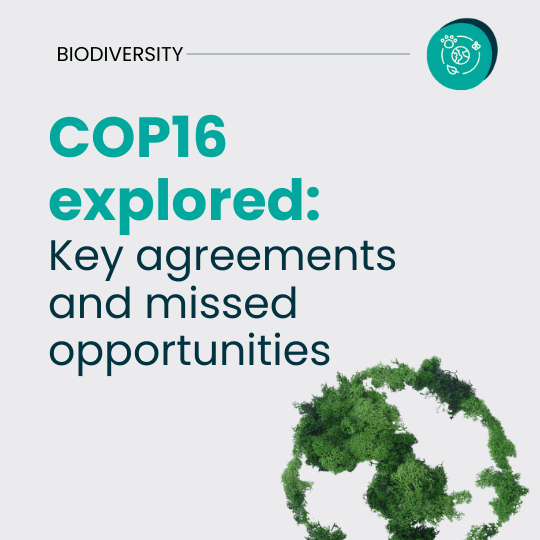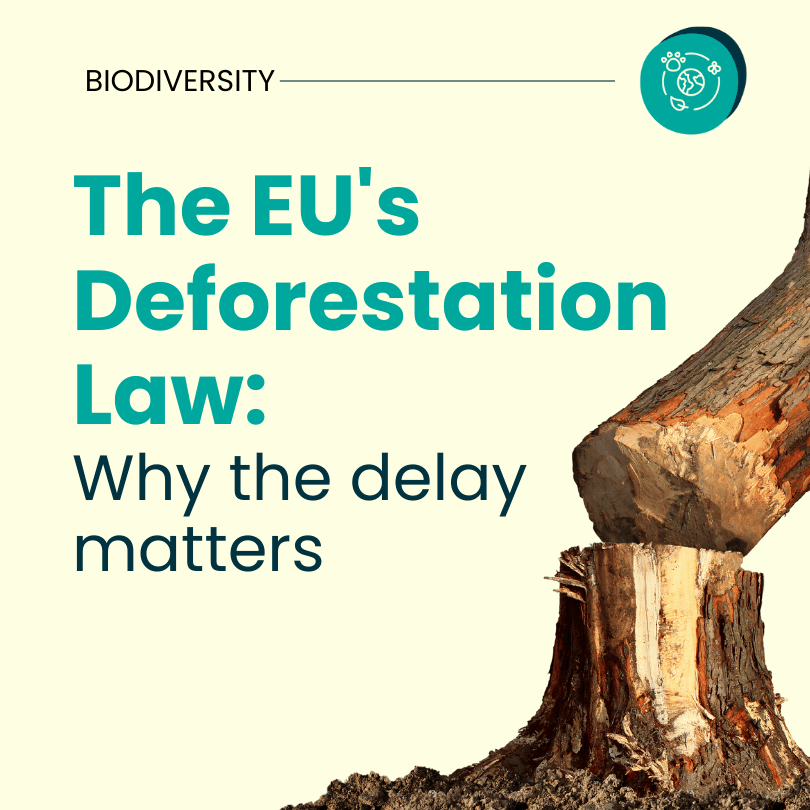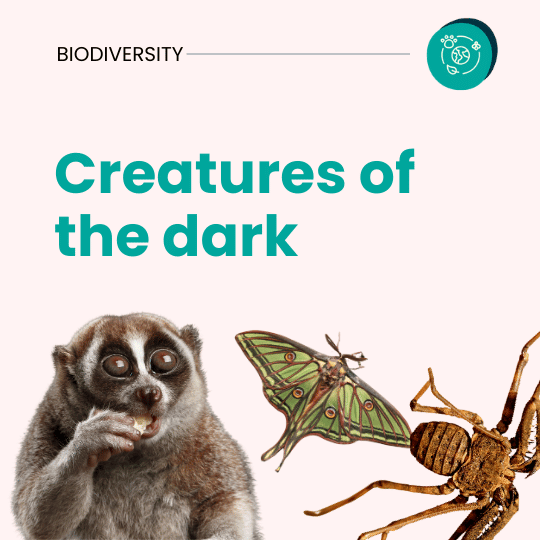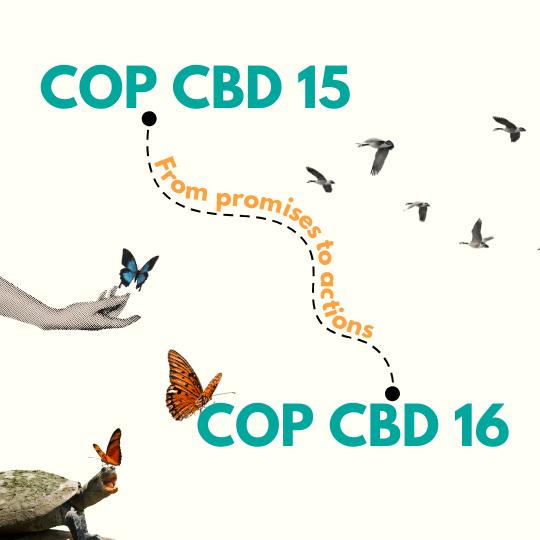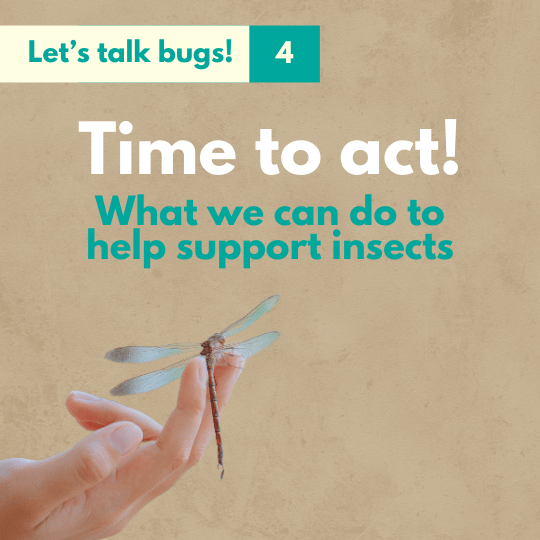Everything you need to know about air pollution in the EU

Written by

Paul Sélegard
Contents
Share this article
What is air pollution?
First and foremost, it is important to distinguish between indoor air pollution and ambient air pollution, as the agents responsible for indoor and outdoor air pollution are not the same. The purpose of the reform voted April is related to ambient air.
Air pollution or poor air quality is referred to when the concentration of certain harmful substances is too high.
The WHO defines a list of pollutants responsible for numerous harmful effects. The main pollutants on this list are:
Fine particules (PM)
These are a collection of particles that can be of different natures (sulphates, nitrates, ammonia, sodium chloride, black carbon, mineral dust) which are too fine to settle and therefore remain suspended in the air. They are labelled as PM and are classified according to their diameter. Thus, PM2.5 are particles that are 2.5 micrometres in diameter.
Carbon monoxide (CO)
A toxic, colourless, odourless gas produced by the incomplete combustion of carbon-based fuels such as wood, petrol, charcoal, natural gas, and kerosene.
Ozone (O3)
A gas that forms from other pollutants emitted by human activities as well as vegetation under the influence of solar activity. This is why ozone pollution is particularly noted in the summer during periods of intense heat.
Nitrogen dioxide (NO2)
NO₂ is a gas commonly released during the combustion of fuels in the transport and industrial sectors.
Sulphur dioxide (SO2)
SO₂ is a colourless gas with a pungent smell. It is produced from the combustion of fossil fuels (coal and oil) and the smelting of sulphur-containing ores.
The WHO therefore defines guidelines on the concentration thresholds not to be exceeded to avoid effects on health and biodiversity. The concentration levels are expressed in micrograms per cubic metre, noted as µg/m³.
Learn more about WHO recommendations.
Where do these pollutants come from?
To put it simply, almost all human activities contribute to pollution (although some natural elements can also cause high levels of pollution, such as a volcanic eruption or a forest fire).
Most of these pollutants are the result of the combustion of fossil fuels (coal, oil, and gas) and are therefore mainly linked to industries, particularly construction due to the production of cement and steel, or the energy sector, which requires the burning of large quantities of fossil materials. Road and air transport are another significant source of air pollution, and finally, the agricultural sector is also to be blamed.
What are the consequences of air pollution?
On human health
The invisible particles penetrate the cells and organs of our body: our lungs, heart, blood, and brain. This leads to diseases such as asthma, strokes, heart attacks, cancer, dementia, and in many cases, death.
The WHO considers air pollution to be the most important environmental threat to humans in the world. Nearly 7 million premature deaths are attributable to it annually. In Europe, this is nearly 300,000 each year.
The WHO considers air pollution to be the most significant environmental threat to humans worldwide. Nearly 7 million premature deaths are attributed to it annually. In Europe, it accounts for nearly 300,000 deaths each year.
Economic impacts
Pollution hampers productivity by affecting workers, which severely impacts overall economic activity. According to the World Bank, the loss of global GDP attributable to air pollution is estimated at 6.1%.
Additionally, the numerous diseases caused by this pollution are costly to taxpayers through healthcare systems. Air pollutants also affect agricultural yields, as indicated by the European Environment Agency, which estimates that some agricultural states have lost up to 5% of their wheat production, costing 1 billion euros.
On biodiversity
Certainly, these pollutants significantly affect ecosystems and vegetation, notably through a process called “eutrophication,” which involves the rapid growth of algae and aquatic plants, facilitated by concentrations of nitrogen oxides and ammonia in the air. When these plants decompose, they reduce oxygen levels, harming fish and other aquatic organisms. This phenomenon also leads to freshwater acidification and affects forest soils.
Key numbers to evaluate air pollution
Good | Fair | moderate | poor | Very poor | Extremely poor | |
(PM2.5) | <10µg/m3 | <20µg/m3 | <25µg/m3 | <50µg/m3 | <75µg/m3 | +80µg/m3 |
(PM10) | <20µg/m3 | <40 | <50 | <100 | <150 | +160 |
(NO2) | <40µg/m3 | <90 | <120 | <230 | <340 | +350 |
(O3) | <50µg/m3 | <100 | <130 | <240 | <380 | +390 |
(SO2) | <100µg/m3 | <200 | <350 | <500 | <750 | +760 |
Source : European Environmental Agency
The political context
Today, two main legal texts at the European Union level regulate air quality standards:
- Directive 2008/50/EC sets the objectives for ambient air quality to prevent or reduce the effects of air pollution on human health and the environment as a whole. It defines measures for the assessment of ambient air quality in all Member States as well as the conditions for obtaining information on ambient air quality. The Directive aims at increasing cooperation between the Member States in reducing air pollution.
- Directive 2004/107/EC is more of a technical. It sets mandatory levels of fine particles, arsenic, cadmium, mercury, nickel and polycyclic aromatic hydrocarbons in ambient air and defines methods and criteria for the assessment of concentrations of these substances in the ambient air.
In 2022, the European Commission introduced a proposal to reform this legislative package.
The main elements of this reform are:
- The merger of both directives into a single text
- Strengthening air quality standards by updating mandatory concentration levels of harmful substances in ambient air closer to WHO recommendations
- Increasing the number of quality sampling points in European cities
- The introduction of a right to compensation for people who suffer from health issues related to air pollution levels above mandatory standards.
Yet a few issues remain with the current version of the draft. For starters, the new air quality standards remain above the pollution levels recommended by the WHO:
While the current draft of the directive lowers the values for fine particles (PM2,5) from 25 to 10 µg/m3 and for Nitrogen Dioxide (NO2) from 40 to 20 µg/m3. The most recent World Health Organisation (WHO) recommendations advise not to exceed 5 μg/m3 for PM2,5 and 10 μg/m3 for NO2.
If the current draft also includes a review clause, the review of the alignment of EU’s air quality standards with WHO will not be done before 2030
Secondly, the implementation deadline is too long. The main deadline for the implementation of the new standard is the 31st of January 2029, but the current draft includes a postponement clause allowing under certain conditions to extend the deadline till 2040
To find out more detailed information see the European Council’s press release.
More articles about air quality
Everything you need to know about air pollution in the EU
https://yeenet.eu/wp-content/uploads/2024/07/Air-Quality-in-the-EU.png 540 540 YEE https://yeenet.eu/wp-content/uploads/2018/11/logo-yee-728x1030.png YEE2024-07-18 12:01:342024-07-19 08:20:06Everything you need to know about air pollution in the EU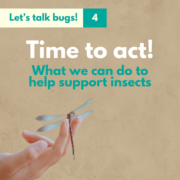
Written by

Emilie Tamo Kamguia
Contents
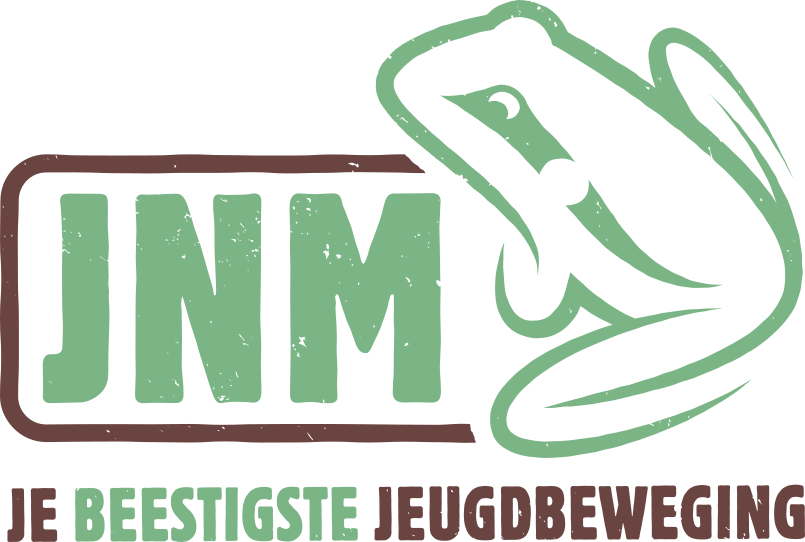
Share this article
In our last article, we explored the numerous challenges insects face. Fortunately, there are many ways to support their survival. As our series on the world of insects concludes, we turn our focus to the solutions and actions that can help protect these vital creatures.
Let’s first delve into how two of our member organisations – UK Youth 4 Nature (UKY4N) and Jeugdbond voor Natuur en Milieu (JNM) – are actively contributing to insect conservation before giving you some practical steps to follow to take action!
UKY4N: Raising Awareness Through Creative Campaigns.
UKY4N empowers young people in nature decision-making in the UK. In 2022, to celebrate the 60th anniversary of Rachel Carson’s iconic book, “Silent Spring”, they organised a youth insect photography competition, which showcased stunning images of UK insects. The winning photos were displayed at an exhibition at Oxford’s Museum of Natural History.
In their Natural Kingdom: Wild Walls campaign, they included insects in murals across UK cities and towns, highlighting local wildlife in decline. A notable mural featured the beautiful tiger beetle in Liverpool. They also create digital art for social media, organise bee walks and hold online workshops.
As part of the “Not so Freshwater” campaign they even hosted a chemical cocktail bar event in London, highlighting the impact of chemical pollution on insects with youth artwork of a mayfly.
What’s Next?
UKY4N plans to continue their successful initiatives, including the “Your Wild Streets” campaign that will advocate for pesticide-free urban areas in the UK to help pollinators thrive!
JNM: Research and Human-Insect Cohabitation
JNM, based in Belgium, focuses on conservation through hands-on projects. A notable example is their work with the Cellar Beetle (Blaps mucronata), a rare species that was first found in their main secretariat building’s basement in 2006 but then thought extinct after the building was renovated in 2016, disturbing the beetle’s habitat. However, five years later, a fresh dead specimen was found, and after an extensive search, 15 living specimens were discovered.
What makes this beetle so special?
20 to 25 mm in size with pitch-black, with smooth shields and long legs, they require old, not-too-clean cellars with high humidity, stable temperatures, and lots of hiding places. They are now quite rare in Belgium, making JNM’s discovery even more significant. Originally, the Cellar Beetle was found mainly in southern Europe, living in caves and later adapting to human-made cellars.
Inside JNM, a dilemma arose because the beetles were found in the same basement where tents and camp materials were stored, which need to be kept dry. To address this, JNM initiated a survey where beetles were caught, marked, and released back into a more humid basement to better suit their needs.
Taking action: How can YOU help
In your garden:
- Maintain insect habitats: Plant native flowering plants and leave some areas of your garden wild to provide shelter and food for insects. Did you know that branches left on the ground and dead wood are extremely useful and provide micro-habitats for the fauna?
- Create water sources: Provide small, shallow water sources like bird baths or shallow dishes with stones for insects to drink from, especially during hot and dry periods.
- Reduce pesticide use: Minimise or eliminate the use of pesticides in your garden to create a safer environment for pollinators and other beneficial insects.
With your community:
- Support conservation efforts: Get involved with local conservation groups and participate in initiatives like habitat restoration.
- Participate in insect monitoring: Join insect monitoring programs to help scientists track insect populations and health. Your observations can contribute valuable data for conservation efforts
- Advocate for pesticide-free Zones: Work with your local community to create pesticide-free zones in public spaces, such as parks and gardens, to protect pollinators.
- Educate others: Share your knowledge about the importance of insects with friends, family, and the community. Host workshops, give talks, or use social media to spread awareness.
By highlighting these inspiring examples and offering practical steps, we hope to empower you to take action and make a difference in insect conservation. You can help ensure a future where insects continue to thrive and play their crucial roles in ecosystems!
More articles about biodiversity
Time to Act! – What can we do to support insect conservation
https://yeenet.eu/wp-content/uploads/2024/06/insect-campaign-4.png 540 540 YEE https://yeenet.eu/wp-content/uploads/2018/11/logo-yee-728x1030.png YEE2024-06-28 11:21:512024-06-28 11:27:25Time to Act! - What can we do to support insect conservation
Written by

Ashton Melfor
Contents


Share this article
Our last article on the history of human insect coevolution already indicated that insects face many challenges. This week the journey continues and we will dive deeper into the challenges faced by insects. We will do this from the perspective of the humble jet, very important hoverfly.
What even is a hoverfly and why are they so important?
Here already we encounter our first challenge. Many arthropod groups are not well understood or equally loved as other arthropod groups by the average European. One such group are hoverflies.
The unknown pollinators
Hoverflies are close relatives of common house flies but unlike house flies are important pollinators instead of decomposers. That’s right, bees and butterflies have another important coworker. Due to the shape of their mouthparts, hoverflies prefer to visit flat instead of cone-shaped flowers. Even though they have important ecological roles, they are unfortunately often forgotten when insects are discussed.
The impact of agricultural intensification
The second challenge faced by hoverflies, as well as many other insects, is agricultural intensification. It is not just the growing of monoculture crops that threatens many hoverfly species, but excessive pesticide use has significant negative effects both on farmland and outside.
Ever heard of a pesticide drift?
This is when, oftentimes invisible, clouds of pesticide travel through the air and into surrounding areas. Because of this, even insects that are kilometres away in a protected area can experience negative consequences of pesticide use.
The impact of urban development
We as humans like to modify our environment to suit our needs. In doing so we often change very important habitat characteristics that are very important for other organisms.
One of these habitat modifications impacting hoverflies is obstructing and controlling the flow of natural waterways. Certain hoverfly species depend on the consistent flow of clean water for the proper development of their larva. This is of particular concern for wetland hoverflies.
When development does not consider the ecological impacts we risk losing valuable habitat characteristics for hoverflies and other insects. Once an ecosystem is lost it can be hard to get it back.
The impact of urban development
We as humans like to modify our environment to suit our needs. In doing so we often change very important habitat characteristics that are very important for other organisms.
One of these habitat modifications impacting hoverflies is obstructing and controlling the flow of natural waterways. Certain hoverfly species depend on the consistent flow of clean water for the proper development of their larva. This is of particular concern for wetland hoverflies.
Urban and industrial development can destroy hoverfly habitat like flower rich meadows, but it can also create opportunities. Promoting flower rich roadsides and changing mowing regimes in urban environments can create additional habitat for hoverflies closer to home.
When development does not consider the ecological impacts we risk losing valuable habitat characteristics for hoverflies and other insects. Once an ecosystem is lost it can be hard to get it back.
Prioritising Habitat Conservation for Arthropod Species Protection
The final challenge we will look into might seem obvious but is not always considered. There are currently 340 hoverfly species considered threatened and many more arthropod species. So it is simply not possible to put species specific conservation measures in place.
Thankfully, on the EU level hoverflies have received attention. But the same can not be said for other arthropod groups. The most effective way to address this challenge is to focus on conserving suitable habitats (not just those under the habitats directive) and enacting policies that take a holistic approach to problem solving. In this regard the EU farm to fork strategy and Nature Restoration Law are crucial.
You as an individual can also contribute by providing hiding places for these insects (dead wood is much appreciated), planting native flowering plants and using less pesticides in your garden.
More articles about biodiversity
Hovering on the edge
https://yeenet.eu/wp-content/uploads/2024/06/insect-campaign-3.png 540 540 YEE https://yeenet.eu/wp-content/uploads/2018/11/logo-yee-728x1030.png YEE2024-06-21 10:24:132024-06-28 11:30:32Hovering on the edge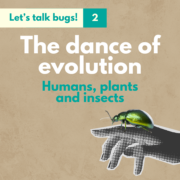
Written by

Emilie Tamo Kamguia
Contents






Share this article
Have you ever wondered how the intricate relationship between insects, plants, and humans came to be? Let’s travel through time to uncover the fascinating coevolution of these vital partners that had a major role in shaping our modern world.
In the Beginning: Insects and Plants
The earliest insects emerged around 400 million years ago, long before humans. As plants began to colonise land, insects evolved to exploit the resources that plants provided.
Did you know pollinating insects are far more diverse than bees? They include species of flies, beetles, moths, butterflies, wasps as well as ants. Those pollinators coevolved with flowering plants, called angiosperms, that appeared around 170 million years ago. In exchange for pollinating services, those plants reward insects with food such as nectar. Pollen itself is a source of nutrients as well for some species like wasps! This mutually beneficial relationship allowed angiosperms to diversify extensively.
We owe the most famous example of this coevolution to Darwin. The scientist predicted that Angraecum sesquipedale, a Malagasy orchid with 30cm nectar spurs, must be pollinated by a hawk moth with an extremely long tongue (proboscis). Some plants like Ophrys apifera even mimic the appearance and scent of female bees to attract male pollinators, thus exploiting this relationship.
The Agricultural Revolution: Insects and Humans
As humans transitioned from hunter-gatherer societies to agricultural ones around 10,000 years ago, the role of insects became even more crucial. Early farmers harnessed the power of pollinators and pest controllers. The domestication of honeybees such as the European honeybee (Apis mellifera), for honey and crop pollination is one of the most significant examples of the use of insects for agricultural purposes.
However, not all interactions were beneficial. The European corn borer (Ostrinia nubilalis), became notorious for its ability to devastate corn crops. This led to the development of early pest control methods, illustrating the complex and sometimes adversarial relationship between humans and insects.
The Industrial Age : Insect Decline
The industrial revolution led to significant changes in agriculture in order to increase productivity: mechanisation, modernisation, monoculture and increased pesticide use. They all heavily altered the dynamics between humans, plants, and insects. In the mid-20th century, following World War Two, the widespread use of DDT* caused severe declines in pollinator populations. This broad spectrum pesticide kills pests and other insects such as bees without distinction and is responsible for long term toxicity.
This example among many led to a reevaluation of pest management practices and interdiction of particularly dangerous molecules. Therefore, DDT was banned from agricultural use worldwide in 2001.
*DDT : Dichlorodiphenyltrichloroethane
Contemporary times and Beyond: Insect Conservation
In contemporary times, the situation has grown even more complex. Human induced threats such as habitat loss, climate change, and spreading of invasive species threaten insect populations, as well as human health. Showing a renewed appreciation for insects’ roles in our ecosystems and everyday life, conservation efforts are made to restore and protect their habitats and diversity. In Europe, initiatives such as the EU Pollinators Initiative aimed to address these challenges by promoting sustainable agricultural practices, conservation strategies, and supporting research on pollinator health. Numerous environmental organisations are advocating for reduced pesticide use and increased biodiversity in agricultural landscapes to support insect populations.
As we look to the future, the coevolution of humans, plants, and insects will undoubtedly continue to shape our world. Understanding and preserving these relationships is crucial for maintaining biodiversity and ensuring food security!
More articles about biodiversity
A Coevolution Tale: Humans, Plants, and Insects
https://yeenet.eu/wp-content/uploads/2024/06/Hidden-in-sight11.png 540 540 Eva Kloudová https://yeenet.eu/wp-content/uploads/2018/11/logo-yee-728x1030.png Eva Kloudová2024-06-07 14:03:382024-06-07 14:09:24A Coevolution Tale: Humans, Plants, and Insects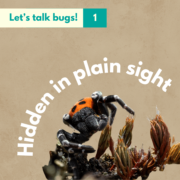
Written by

Ashton Melfor
Contents
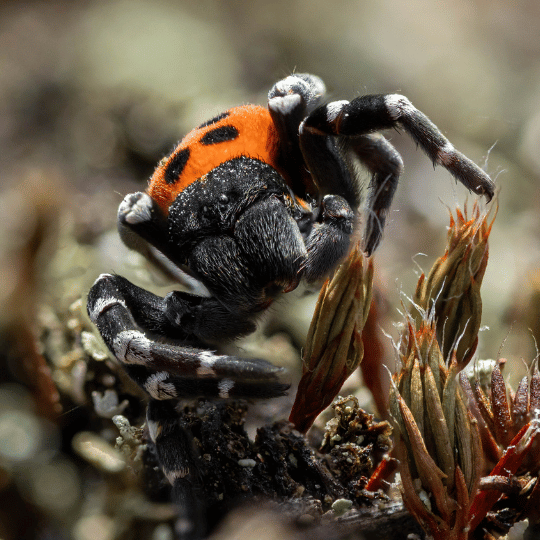
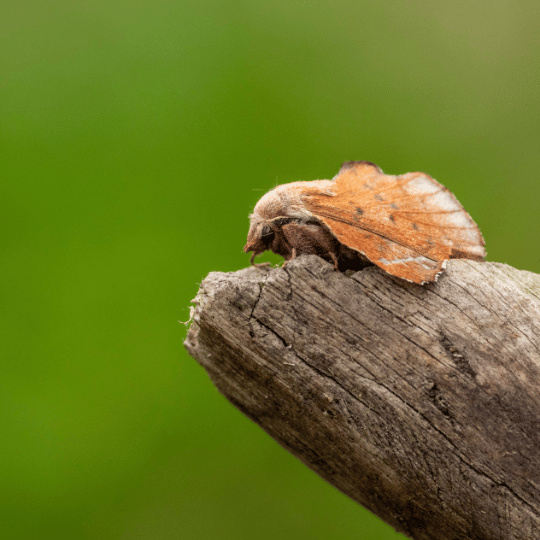

Photo credits: Ewout de Vos

Share this article
If it has 6 legs it’s an insect and if not it is something else.
With all the hustle and bustle going on in our lives, especially for those of us living in big cities, our time spent in nature is limited to short walks in nearby parks. Even when we do attempt to visit our national parks, some creatures often go overlooked. Many of these overlooked organisms belong to the phylum (group) of arthropods.
The reason why we use the word arthropod instead of insect is because all insects are arthropods but not all arthropods are insects.
Confused? Don’t worry, just look at the legs. If it has 6 legs it’s an insect and if not it is something else.
Examples of insects include:
- Bees
- Butterflies
- Beetles
- Praying mantis
Examples of non insect arthropods are:
- Shrimp
- Spiders
- Millipedes
- And yes even ancient trilobites
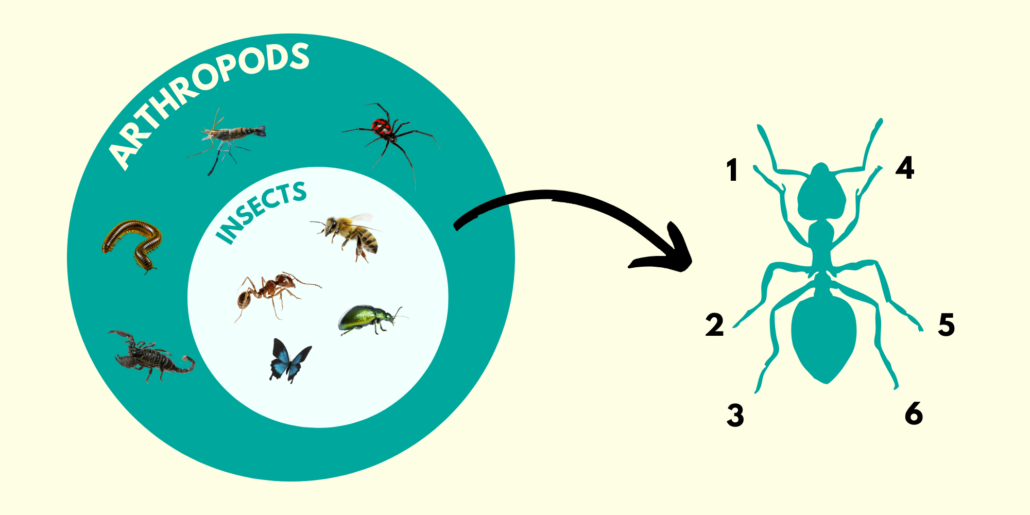
Let’s look at some of these arthropods that are often hidden in plain sight
One of the more unexpectedly cute ones is the Lady bird spider (Eresus sandaliatus). As with many species in nature, it is the male that boats such vibrant colours. Though they look fuzzy and cute, try not to pick them up as a bite can cause some discomfort. Spiders, even those that look more menacing, play an important role in our ecosystems. These arthropods are mostly predators, as such they control the population of other arthropods lower in the food chain. We call this top down control. In doing so they prevent any one species from becoming too dominant in the ecosystem.
Moving on to some flying arthropods, we have wild bees. Most people are familiar with honey bees and their importance in European agriculture. But did you know that out in nature wild bees are more important than honey bees? Certain bees specialise only on certain groups of plants like yellow asteraceae. There are even bees that parasitise other wild bee nests like the Cuckoo bees from the genus Nomada.
The final arthropod we want to highlight is the Aspen lappet (Phyllodesma tremulifolium). Unlike our first arthropod, the Lady bird spider, the Aspen lappet will definitely go overlooked during your next visit to your favourite Natura 2000 area thanks to its amazing camouflage. The ability to blend in with your surroundings has proven to be beneficial for both predators and pray alike. Praying mantises use it to ambush prey and moths and butterflies like the Aspen lappet use it to avoid becoming lunch. And have you ever wondered why moths are so fuzzy? Well, this is an adaptation that helps them avoid detection from predators and keep them warm so they can fly at night.
So next time you’re in nature don’t forget to keep an eye out for those cool arthropods hidden in plain sight!
More articles about biodiversity
Hidden in plain sight
https://yeenet.eu/wp-content/uploads/2024/05/Hidden-in-sight.png 540 540 YEE https://yeenet.eu/wp-content/uploads/2018/11/logo-yee-728x1030.png YEE2024-05-30 10:14:032024-05-30 10:15:21Hidden in plain sightThe impact of climate change on terrestrial & freshwater ecosystems
A Wake-Up Call from the European Environment Agency’s debut climate risk assessment
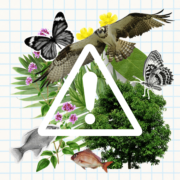
Written by

Ashton Melfor
Contents
Share this article
What is the Climate Risk Assessment?
The Climate Risk Assessment (CRA) by the European Environment Agency (EEA) is a course assessment of the current risks posed by climate change for Europe, for different sectors. The report identifies and analyses 36 risks from the policy perspective and synthesises current scientific consensus on the topic.
The historic decline in habitat quality experienced by Europe’s ecosystems seems to be continuing. This negatively impacts many different species as well as people’s livelihoods. Climate change is already a major player behind these ecosystem changes. However, not all ecosystems are impacted in the same way, and some face other challenges that exacerbate the effects of climate change. Here follows a summary of the climate risk assessment for each of the main terrestrial ecosystems in Europe.
Forests
The CRA makes clear that climate change affects both the structure of forests and their functioning. This influence on forest functioning and structure is both through direct interactions with the forest system and through indirect interactions with other species or drivers of change that do play a direct role in forest systems.
Examples of climate drivers acting on forest systems are temperature and moisture. However, habitat fragmentation caused by deforestation is the primary driver behind forest habitat quality degradation.
Furthermore, a lack of sustainable forestry practices like monocultures also made Europe’s forests more susceptible to pressures from climate change.
Some of these challenges are: drought-induced mortality, species range shift, increased incidence of wildfires and pest outbreaks. Fortunately, the forestry sector has adopted measures to create more climate-resilient forests. Nevertheless, it remains to be seen how impactful these measures are, given uncertainties surrounding forests’ responses to climate change.
Peatlands
The leading cause of peatland degradation is human development conflicting with the habitat requirements of peatlands. The effects of climate change are just exacerbating these already existing mechanisms affecting peatland water balance.
For example, climate-induced drought reinforces peatland drying that is already happening due to peatland drainage. Unfortunately 50% of peatlands in the EU are degraded (25% Europe-wide). This puts many species dependent on peatlands like the bog orchid (Hamarbya paludosa) at risk of going extinct. Very alarmingly, future projections predict that peatland will become a net carbon emitter under current rates of change. This limits their ability to help us mitigate climate change effects. Peatlands are currently a large carbon sink.
Freshwater systems
Freshwater systems are affected by different climate drivers compared to the previous ecosystems. But most importantly, temperature and precipitation contribute to the most change. The consequences of increasing temperatures include shifting thermoclines or more pronounced thermal gradients in water bodies.
Temperature-sensitive species are also at risk as water temperatures rise. Decreases in precipitation can potentially cause water bodies to dry up significantly, but increases in precipitation can lead to toxic algal blooms. The fact is that surface waters are already increasing at a rate of 0.21-0.45°C per decade. This rate of change is particularly high in northern climates. Widespread eutrophication is already a concern in many European countries.
Arctic and mountain ecosystems
The main drivers of change in arctic and mountain systems are rising temperatures and human use. Both systems are particularly susceptible to climate change as they experience faster warming than on average. Additionally, both systems have a long history of human use, from mining and reindeer herding in the Arctic to grazing in mountain grasslands. The current situation of these systems is one of contrasting extremes.
Both droughts and high water retention are becoming commonplace in the Arctic. This destabilises ecosystem function and the ecosystems provided. Mountains are getting less snowfall leading to glaciers receding and lower snowmelt feeding into rivers.
Unfortunately, these threats are projected to worsen with climate change, as the Arctic region warms faster than most places. Leading to the extinction of arctic species, disruption of livelihoods and disappearance of arctic and mountainous ecosystems.
Urban ecosystems
Though climate change puts more pressure on stressors affecting urban ecosystems like the heat island effect, drought and pollution, the impacts are less strong as urban species are more resilient and adaptable.
Nonetheless, increased urban stress still puts the system balance at risk. Conditions might become more favourable for invasive or alien species. Pests and diseases might also be favoured in these changing conditions. Many of these effects are already being felt across European cities, though it is highly context-dependent.
Future projections also show that on the one hand drought in some cities will become more extreme and in others, floods are to be expected. The rise in urban heat island effect in the future is particularly concerning for tree and shrub species already living at their temperature optimums.
Agro-ecosystems
Climate change-induced changes are fortunately not major drivers of change in agro-ecosystems. However, changes in agricultural practices are changing this ecosystem in unprecedented ways. What is certain, is that agro-ecosystems are facing many challenges. Many ecosystem services like pollination, pest control and water regulation are under threat and declining due to many different drivers.
One of the major changes in this system is the sharp decline in pollinators, a combination of agricultural intensification, climate change-induced phenological shifts and pesticide use are disrupting the intricate interactions between insects and plants. In the future climate change will surely become a major driver behind biodiversity loss in agroecosystems. Furthermore, climate impacts soil conditions, with more extreme droughts and soil erosion to be expected.
Conclusion
Not surprisingly, climate change is causing significant changes in terrestrial and aquatic ecosystems. Marine and coastal ecosystems are disproportionately affected by these changes and thus require urgent action. Policy-wise, long-term prioritisation and planning are required to facilitate adaptive management. So how do we move forward? Stronger policy at the EU level is required and in addition, states must work together to tackle our shared risks posed by climate change.
More articles about biodiversity
The impact of climate change on terrestrial & freshwater ecosystems
https://yeenet.eu/wp-content/uploads/2024/05/EEA-climate-risk-report-impact-on-biodiveristy.png 540 540 Eva Kloudová https://yeenet.eu/wp-content/uploads/2018/11/logo-yee-728x1030.png Eva Kloudová2024-04-30 10:02:312024-05-03 14:07:55The impact of climate change on terrestrial & freshwater ecosystemsState of the world’s migratory species
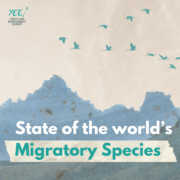
44%, that is the percentage of migratory species listed under the Convention on Migratory Species (CMS) on the path to extinction. The CMS recently published a first of its kind report on the state of the world’s migratory species. This landmark report shows us that we need to take immediate action in order to preserve these amazing animals that know no borders.
Written by

Ashton Melfor

Emilie Tamo Kamguia
Contents
Share this article
What is the CMS?
The Convention on Migratory Species of Wild Animals is a United Nations (UN) treaty. The goal of this treaty is to promote the sustainable use and conservation of migratory species and their habitat throughout the world. Under this treaty governments and wildlife experts must collaborate to address the issues surrounding animals that make migratory journeys on land, in the air and sea. The Convention has 133 members spread across every continent, except North America.
Visual summary
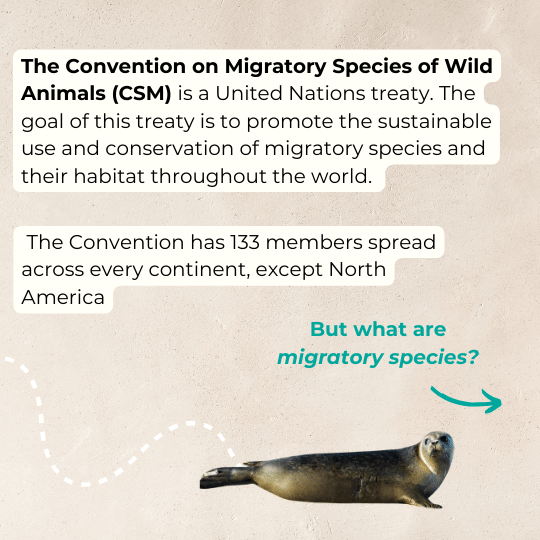
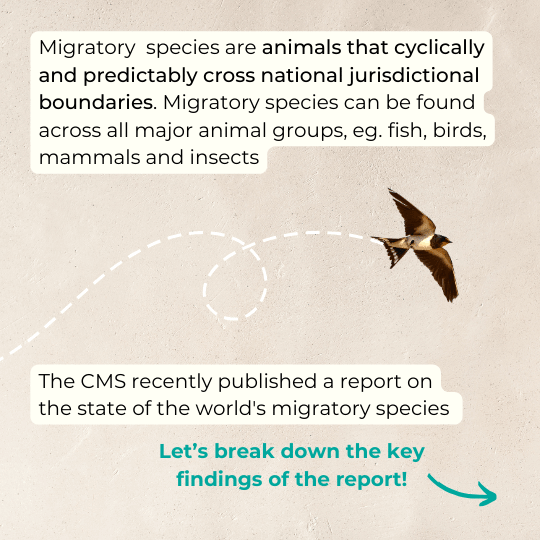
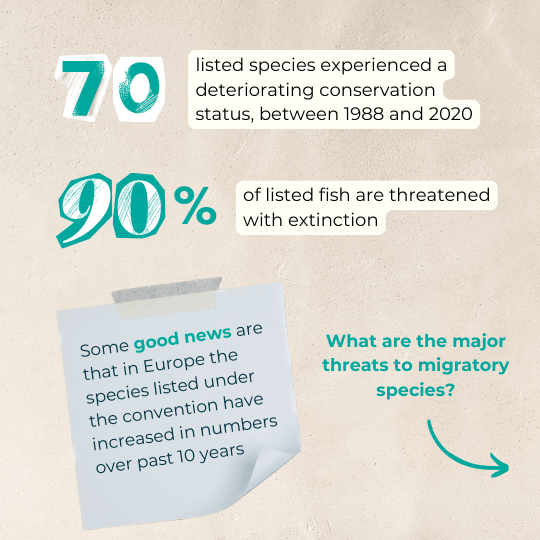
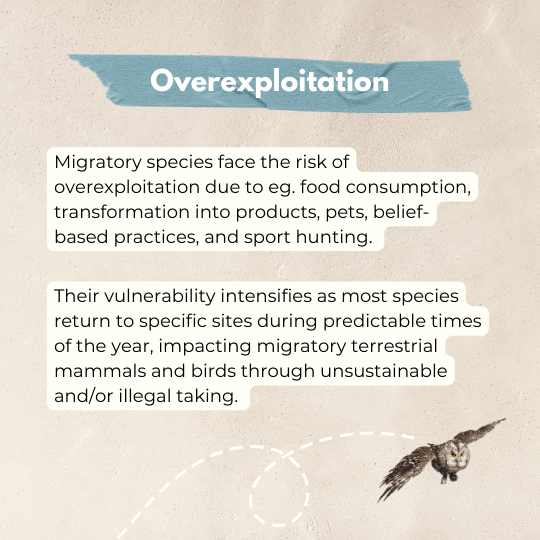
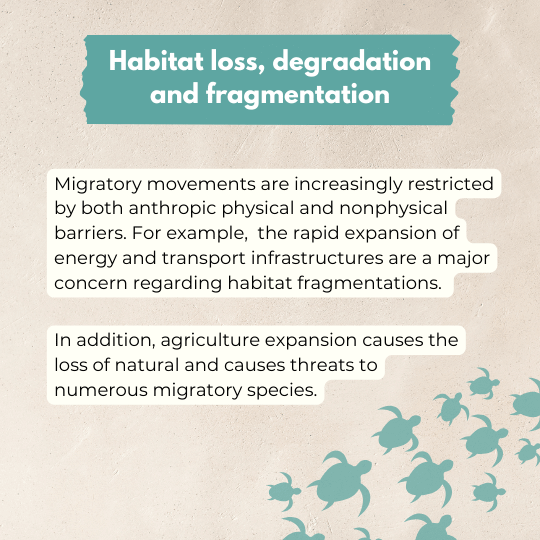





Looking closer at the conservation status of migratory species.
We often hear the words critically endangered, endangered and many more terms thrown around, but what do these terms actually mean for the CMS species being categorised and their conservation?
Let’s explain with an example, the Humpback whale (Megaptera novaeangliae). After a major decline in population size to 450 individuals from 27,000, the western South Atlantic sub-population has reportedly recovered 93 % of its population size. This puts the global population of this majestic creature at around 80,000 individuals. For this reason the Humpback whale is classified as least concern. But the same can not be said for other sub-populations of the Humpback whale. Most are still endangered. So we must be careful when discussing threat level classifications. As global classifications do not always reflect regional or local conservation status of species.
Across the board, the extinction risk is rising for migratory species under the CMS. The report highlights that in the period of 1988 to 2020, 70 listed species experienced a deteriorating conservation status, hence leading to a higher Red List threat category. On the other hand only 14 listed species had a genuinely improving conservation status. Something very important that the report mentions is that, globally 399 migratory species are not listed under the CMS. These species are mostly fish and birds. This is an unfortunate fact as these species can not benefit from CMS protection. They deserve more investigation by the CMS countries and scientists.
Of the species listed under the CMS the future of migratory fish are particularly concerning. 97% of these fish are threatened with extinction. Furthermore, most have a declining population. Compared to fish, mammals and birds are doing a bit better overall. 78% of birds and 44% of mammals have a population of least concern. However, in reality this still means that 134 (14%) birds and 63 (40%) mammal species are still threatened with extinction.
For us here in Europe, there is some good news. As the report says that in the past 10 years, migratory species listed under the CMS in Europe have increased in numbers. Which means a more positive Red List threat status. Fortunately, this is also the case for migratory species in the Caribbean, South and Central American regions.
Revealing threats to migratory species: human activities in the spotlight
Navigating across vast distances, migratory species encounter significant challenges caused by human activities, not only during their journeys but also at pivotal locations for their feeding and reproduction processes. The CMS indicates that 58% of monitored sites, vital for CMS-listed species, are at risk due to anthropogenic reasons.
The report’s in-depth analysis exposes the two most pressing human-induced threats impacting migratory species:
Overexploitation
Migratory species globally face the risk of overexploitation serving various purposes such as food consumption, transformation into products, pets, belief-based practices, and sport hunting. Their vulnerability intensifies as most species return to specific sites during predictable times of the year, impacting migratory terrestrial mammals and birds through unsustainable and/or illegal taking. The oceans, too, witness the consequences of overfishing and the unintended capture of non-target animals, posing a significant challenge to marine migratory species worldwide.
Habitat loss, degradation, and fragmentation
Migratory terrestrial and marine movements are increasingly restricted by both anthropic physical and nonphysical barriers, disrupting vital connectivity for a large range of species. The rapid expansion of energy and transport infrastructures emerges as a major concern regarding habitat fragmentation and its impact on migratory behaviours. In addition, agriculture expansion causing the loss of natural lands and intensification of practices to meet growing human food consumption are key threats to numerous migratory species.
The report reveals other pressures faced by migratory species such as climate change and pollution. These findings highlight the urgent need for immediate intervention to address these threats and ensure the survival of these species and the habitats they depend on.
Unifying efforts to protect migratory species : a wake-up call fo urgent action
After detailing the numerous pressures confronting migratory species, the CMS issues a clear call to immediate, collaborative and international action. Governments, communities, the private sector, and other stakeholders are urged to come together to ensure the survival of migratory species.
While the State of the World’s Migratory Species report presents a concerning scenario, it also highlights successful conservation efforts and policy changes from local to international, demonstrating that viable solutions exist. Achievements include multilateral initiatives to tackle illegal taking of migratory birds and the establishment of international task forces like the CMS Energy Task Force, aiming to reduce renewable energy projects impacts on migratory species. However the report emphasises the need to amplify and expand these efforts globally to achieve conservation objectives.
To combat overexploitation of migratory species, the report’s priority recommendations for action include implementing stricter national legislation, improving monitoring of legal developments, and reinforcing initiatives to tackle illegal, unsustainable taking along with mitigating incidental catch. Addressing habitat loss, degradation and fragmentation requires additional identification and effective protection of crucial sites for migratory species, getting further knowledge on the threats they face, ensuring their ecological connectivity and restoring them when necessary. Urgent attention should be directed towards nearly extinct species, especially CMS-listed fish species. Proposals also include completing the CMS listings with overlooked endangered migratory species, demanding national and international attention. The report finally advocates for implementing ambitious initiatives to tackle climate change and light pollution.
The alarming decline of migratory species populations and broader biodiversity loss due to numerous anthropic threats raises an urgent imperative: a collective and global acceleration of efforts to ensure their future existence is necessary. The CMS, serving as a worldwide cooperation platform, plays a critical role in providing solutions and mobilising forces at every level.
As youth we also have a role to play. Whether we are volunteering for local environmental organisations, advocating for the environment or getting involved in political discussions our voice can stimulate change!
More articles on Biodiversity
State of the world’s migratory species
https://yeenet.eu/wp-content/uploads/2024/03/State-of-the-worlds-Migratory-Species.png 540 540 Eva Kloudová https://yeenet.eu/wp-content/uploads/2018/11/logo-yee-728x1030.png Eva Kloudová2024-03-15 10:19:262024-03-18 12:32:24State of the world’s migratory speciesDive into action with UK Youth4Nature | Members’ Spotlight
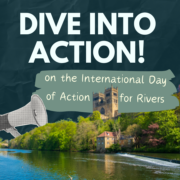
Written by

Stina Joanna Gremme

Hanna Træland Rostøl
Contents
About UKY4N
UK Youth 4 Nature (UKY4N) is the leading UK youth movement calling for urgent action on the nature crisis, and they have been cherished members of YEE since 2022. UKY4N’s mission is to mobilise and empower young people to advocate for decisive action on biodiversity in the UK, emphasising the importance of protecting and restoring nature and wildlife to address the consequences and issues of climate change. March 14th marks the International Day of Action for Rivers, and we find this the perfect occasion to put the spotlight on UKY4N and its creative river projects.
Started in 2019 as a simple Whatsapp group with the mission of bringing nature into stronger focus within political discussions, UKY4N has rapidly evolved into an active organisation with a solid volunteer base all across the UK. The organisation has strategically focused its campaigning efforts on nature rather than climate issues and has today successfully positioned itself as a prominent advocate for biodiversity. We have met with co-director Ellen Bradley, to hear more about UKY4N’s creative campaigning and imaginative projects on rivers, hoping to inspire others to take action on this important topic!
Check out UKY4N
How can you help freshwater?
-
Support nature-friendly farmers, where possible buy organic, local food.
-
Banish pesticides and herbicides from your garden!
-
Celebrate freshwater ecosystems and raise awareness of the threats, share a photo on social media, tag UKY4N and use the hashtag #NotSoFreshwater
-
Research and learn more about the state of freshwater in the UK, sign up for the UKY4Ns newsletter to keep up to date with our campaign.
-
Join the team! UKY4N is always looking for new members to help fight for nature. Email UKY4N at ukyouthfornature@gmail.com to find out more.
Share this article
Making waves for freshwater conservation
Freshwater ecosystems are the lifeblood of our planet. In the UK, around 3% of land is covered by freshwater and with an intricate network of 200,000 km of streams and rivers the freshwater ecosystems in the UK are of international importance. Thousands of lakes, ponds and ditches provide homes for diverse wildlife species, ranging from dragonflies to water voles. And yet, no rivers in England, Wales or Northern Ireland are considered to be in high ecological health, and in Scotland, as much as 92% of rivers do not meet these standards either.
Recently, freshwater systems gained more media focus on regulating sewage and plastic pollution, advancing freshwater protection. However, agricultural pollution, affecting 40% of all freshwater bodies in England, remains overlooked. In addition to that, targets for cleaning up waterways, such as the goal set for 2027, have been pushed back to 2063, giving the protection of freshwater systems in the UK an urgency that cannot be ignored.
With the campaign Not so Freshwater, UKY4N launched an awareness campaign giving agricultural pollution a much-needed spotlight. The goal is to cut the use of pesticides in half by 2023 as well as restore field margins and riverside ecosystems to reduce field run-off. Ellen emphasises creative campaigning to facilitate positive change, celebrating sustainable farmers and advocating for political action.
On the 23rd of May 2023, UKY4N was able to host a successful event, summoning a variety of politicians and NGOs. The Chemical Cocktail Bar was one of the highlights of the event, which received a big positive response and even more importantly, political attention. The concept behind the Chemical Cocktail Bar is simple, creative and yet effective. Cocktails, named after UK rivers like the Mersey and Thames, the bar creatively highlighted freshwater pollution. Presented as beautifully designed cocktail recipes, these cards added a lively touch with real added proof of the urgency of freshwater pollution, proving that campaigning for political change does not have to be boring or dry.
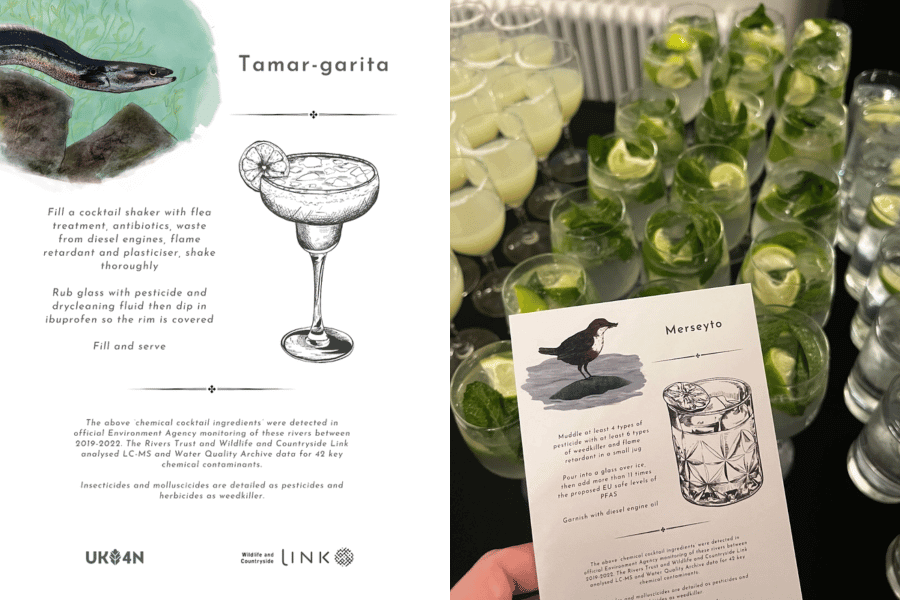
The event successfully brought together young people and politicians in a positive atmosphere, fostering constructive discussions on environmental challenges, as Ellen tells us. UKY4N maintained a balance of fun and passion, ensuring engagement while addressing urgent issues facing our natural world.
UKY4N offers practical guidance for individuals to make a difference in preserving freshwater systems, including a five-step guide for reducing pollution. Additionally, they provide a template for a letter to your regional Member of Parliament to advocate for improved chemical standards and freshwater regulation. Later this year, UKY4N will host The Senedd, an event in Wales, allowing young people to engage with Welsh politicians on nature and freshwater issues.
With its campaign Not So Freshwater and a creative, positive and fun approach UKY4N inspires us to get involved in the movement for cleaner waterways and a more sustainable future. Let yourself be inspired too!
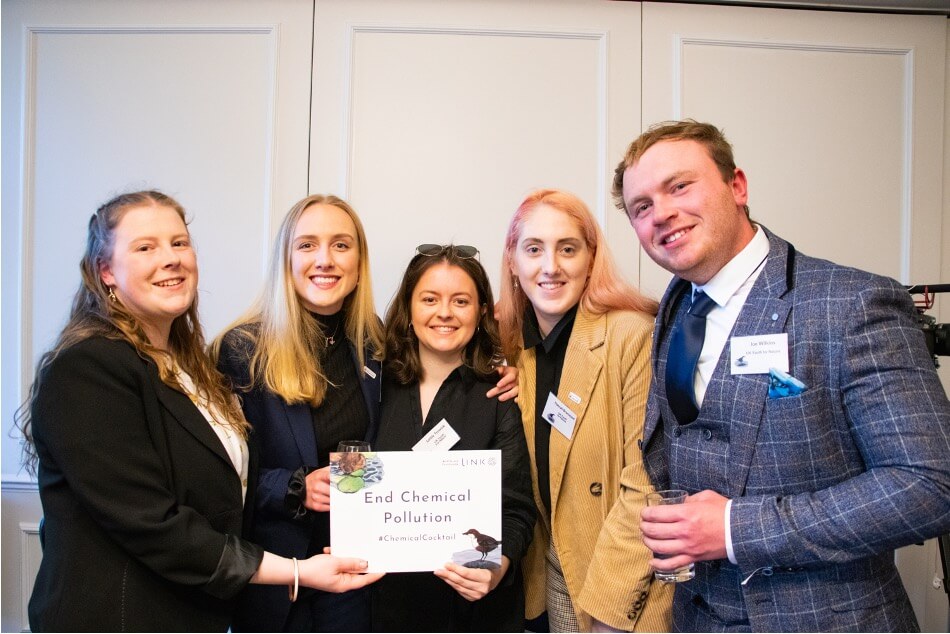
Crafting change with creative campaigning
The fun and creative methods used in the Not So Freshwater project were not a one-off, but rather lie at the very heart of UKY4N’s approach to advocating for nature. Creative campaigning entails using creative and imaginative methods and employs artistic, cultural and interactive strategies to make an impact. Ellen tells us that the main goal of this approach is to get young people excited about an issue and encourage them to make a positive contribution, even if they are not experts on issues such as the environment, sustainability or politics. That way, different people can contribute in different ways, and that makes it more diverse and even more impactful!
Another example of UKY4N’s bold creative campaigning was in their project Nature Loss: Lines in the Sand. On March 23, 2022, a 50-metre drawing depicting biodiversity in Britain was created on Scarborough Beach, featuring four biologically significant species that are declining. This symbolic act aimed to address the alarming depletion of nature in the UK, urging authorities to prioritise conservation efforts. Their creative ways received public recognition and an international audience, and if you look at the pictures of this impactful mural it is easy to understand why!
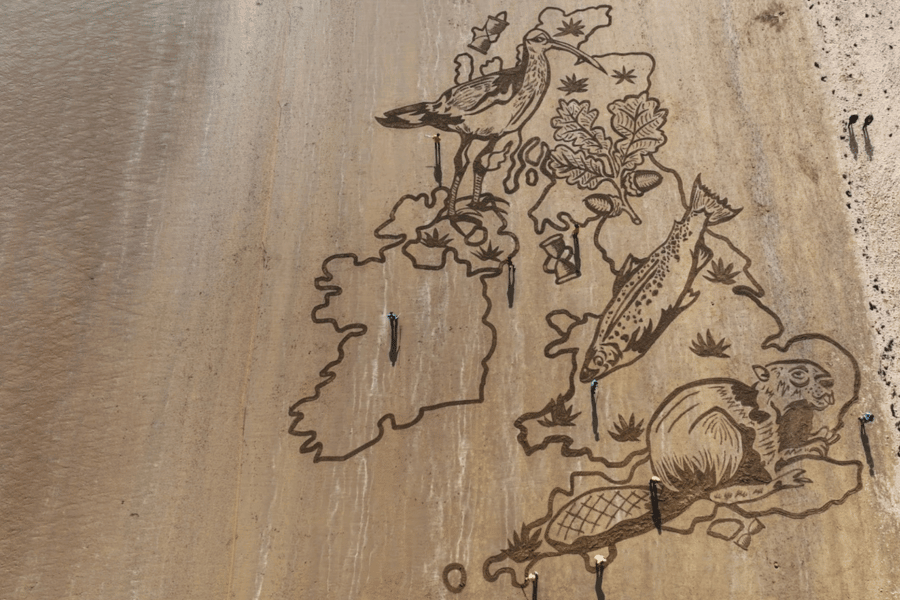
UKY4N also regularly hosts workshops to introduce young people to creative campaigning, the next one to be held in Brighton on the 23rd of March 2024.
In addition, UKY4N is currently dedicating their time to work relating to the general elections coming up in the UK this year. With the voting turnout among people in the age between 18 to 24-years in the UK in 2019 reaching 47% (compared to over 74% in the group of over 65-year olds), getting young people more enthusiastic and interested in the election is a crucial issue. As Ellen shares with us, only 50% of young people in the UK think they learn sufficiently about politics in school, so another focus of UKY4N lies on knowledge-sharing and capacity-building on the voting system. In order to be able to navigate the different and sometimes confusing party manifestos, UKY4N explains each programme from relevant political parties for everyone to understand. The main reason for that is to underline the importance of casting your vote to support certain policies and causes, as they so aptly put it on their website, “[n]ature cannot vote in elections. But many of us can!” With important elections coming up across Europe this year, not to mention the European Parliament elections, this is something many of us can keep in mind!
And with that being said, it is easy to see the problems that unite us. UKY4N is tackling the problems of the depletion of nature in the UK, but we are seeing similar problems worldwide. Although freshwater ecosystems are so important to nature and human well-being, they are also the most threatened in the world. Since 1970 freshwater species have experienced an 83% decline – twice the rate experienced within terrestrial or marine sources. Let us therefore stand united on this International Day of Action for Rivers, and reflect on the importance each and every one of our actions plays in the protection of our water systems!
More about Biodiversity
Dive into action with UK Youth4Nature | Members’ Spotlight
https://yeenet.eu/wp-content/uploads/2024/03/UKY4N-river-day-post2.png 540 540 Eva Kloudová https://yeenet.eu/wp-content/uploads/2018/11/logo-yee-728x1030.png Eva Kloudová2024-03-14 14:28:492024-03-18 12:33:59Dive into action with UK Youth4Nature | Members' SpotlightWhat are countries doing about plastic pollution?
A reflection of a INC-3 youth delegate.
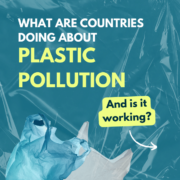
Written by
Shellan Saling
Disclaimer
The views and opinions expressed are those of the author and do not necessarily reflect the official policy or position of YEE.
Contents
Visual summary


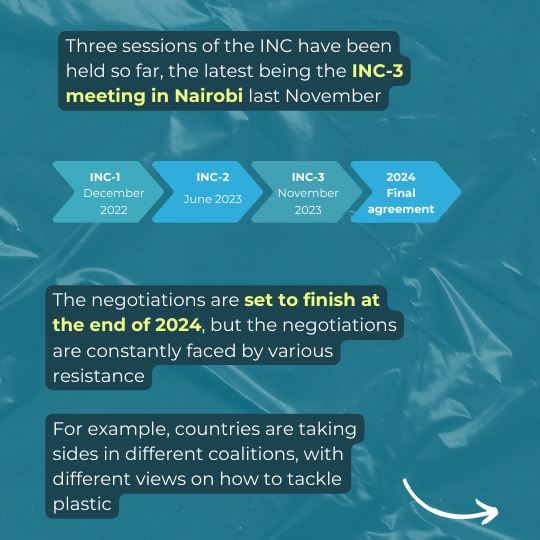







Share this article
The “Nairobi Spirit”
At the United Nations Environmental Assembly (UNEA 5, 2022) at the UNEP headquarters in Nairobi, Kenya Resolution 5/14 entitled “End plastic pollution: Towards an international legally binding instrument” was passed to start the process of the plastic pollution treaty.
This historic moment marked the beginning of what several major news organisations have called the most important environmental deal in all fields since the 2015 Paris Climate Agreement. This paved the way for the establishment of the Intergovernmental Negotiating Committee on Plastic Pollution (INC) to develop “the instrument”, which is to be based on a comprehensive approach that addresses the full life cycle of plastic, including its production, design, and disposal” (UNEP) (See timeline below).
Five rounds of negotiations (INC) have been proposed for countries to come to an agreement and close negotiations by the end of 2024. This treaty will be the first-ever global agreement on addressing plastic pollution and aims to tackle the full life-cycle of plastic.
Plastics are currently one of the last unregulated industries contributing to the climate crisis and increased carbon emissions. Currently, 430 million metric tons of plastics are produced every year and without intervention, this could triple by 2060. The majority of plastic is neither recycled nor reused (UNDP). It follows that a plastics treaty is not only necessary for human health but also for future generations. This statistic was emphasized in the most recent negotiations (INC-3) in Nairobi, Kenya in November 2023.
Timeline of the INC Process
The third round (INC-3) was held from 13 to 19 November 2023 at the UN Environment Programme (UNEP) Headquarters in Nairobi, Kenya. After countries voted to create a Zero Draft at INC-2. The Zero Draft was a collection of ideas and views from member states submitted during the international negotiations in INC-2. The draft was released during the inter-sessional period between INC-2 and INC-3, when countries began negotiating the Zero Draft version of the treaty. During a preparatory meeting for INC-3 on November 11th, Iran announced a low-ambition coalition with other gas-driven countries called the Global Coalition for Plastics Sustainability. There was very little to no mention of the coalition during the rest of the negotiations. Countries negotiated a specific text in three smaller groups called contact groups. Each group debated the following parts of the treaty:
Contact group 1: Part I and Part II of the Zero Draft
Contact group 2: Part III and IV
Contact group 3: Addressed elements not previously covered at previous INCs including principles, scope, and definitions.
While negotiations progressed throughout the week, the “Nairobi Spirit” died at the very last minute late on the last night of negotiations after contact group 3 could not come to a consensus on important intersessional work due to be completed between INC-3 and INC-4. Low-ambitious countries successfully used stalling tactics to threaten an ambitious treaty being drafted by the end of 2024 and aimed to be in place by 2025. While countries are eager to work and close negotiations by the end of 2024, there appear to be a lot of ideas for the treaty which are ultimately hindering progress.
More ideas than agreements after INC-3
The negotiations ended with more ideas than conclusions. During INC-3 the secretariat received over five hundred submissions from member states on the treaty. Due to the number of submissions at one point, some member states were arguing that their voices and inputs were not being heard. This led to threats by some states to quit negotiations.
The result was a revised draft expanded from thirty-one pages released after INC-2 to 71 pages. Some sections such as the scope have sixteen different options on text while several other options have four or more options. This was instead of a first draft that was expected after INC-3, a revised zero draft was released on December 26, 2023.
Low-ambitious, gas-driven countries such as Iran, Russia, and Saudi Arabia are arguing for a treaty focused on recycling, waste management and voluntary action, while other countries that are part of the High Ambition Coalition to End Plastic Pollution, co-chaired by Norway and Rwanda, are arguing for a treaty that focuses on global mandates by aiming at reducing plastic and targeting the full lifecycle of plastics. Along with more ideas, the lack of an agreement on intersessional work resulted in more setbacks.
The consequences of a lack of consensus
The initial timeline proposed important inter-sessional work which, as agreed at INC-2, should have happened between INC-3 and INC-4. This intersessional work was supposed to bring in experts on different technical and scientific topics related to plastics, finance, and implementation issues. Many of these topics would help delegates have a better understanding of what they are discussing and negotiating as well as different perspectives to fill in knowledge gaps.
This would have helped advance negotiations further at the upcoming INCs. At the last minute, the United States tried to reopen negotiations with Brazil agreeing to try to come to a consensus on work for the inter-sessional period (months between INC-3 and INC-4), but Russia and Saudi Arabia struck down the idea. After hearing member states’ opinions, the Chair decided not to reopen negotiations delaying hopes of progress towards an ambitious plastic reduction treaty.
An ambitious treaty threatened by lobbyists
As countries argue the direction of the treaty, several issues externally and internally towards an ambitious treaty remain. The treaty has gained attention from the fossil fuel and chemical industry. According to the Center for International Environmental Law (CIEL), “143 fossil fuel and chemical industry lobbyists have registered to attend the third session of the Intergovernmental Negotiating Committee (INC-3) to advance a global plastics treaty, gaining access to the negotiations at a time when the talks are entering a critical phase”. The article goes on to say this is a 36% increase from previous INCs.
The fossil fuel and chemical industry lobbyists outnumbered the scientist coalition by over 100 people and 70 of the smallest member state delegations, and they will likely increase in the coming INCs. One of the potential solutions to preventing fossil fuel and chemical lobbyists from interfering with the negotiations would be to pass a Conflict of Interest Policy in the upcoming United Nations Environment Assembly (UNEA-6) or future meetings related to the plastics treaty such as the future Conference of Parties (COP). A Conflict of Interest Policy has been requested by several observers. By passing this policy it could prevent a weak treaty.
Lack of representation in the treaty
The treaty continues to lack representation from key groups impacted by plastics and the effects of plastic pollution in the revised Zero Draft text: its seventy-one pages only mention “Indigenous” twenty-eight times, while “youth” and “children” combined are only mentioned ten times. Other vulnerable groups such as women, waste pickers, and workers in plastic value chains are even mentioned less. There are several vulnerable groups not yet mentioned in the treaty such as the disabled (physically and visually-impaired), people of color, and displaced people. Also, the term vulnerable populations/groups remain undefined. This could cause problems during the implementation of the treaty, leaving certain groups at risk of the effects of plastic pollution and unable to benefit from the treaty.
Final thoughts and looking ahead
The UN Plastic Pollution Treaty faces an uphill battle to be completed by the end of 2024. It is still unknown if the treaty will focus more on waste management and recycling or reduction. Several important groups remain voiceless in a treaty critical for their health and livelihoods. The next two INCs are scheduled to be INC 4 in Ottawa, Canada in April and INC 5 in Busan, South Korea in November.
Many key elements of the treaty such as scope, definitions, and principles remain undecided, which will add to the additional challenge of cutting text and cementing a clearer direction the treaty will take. This will make it more challenging for member states to complete the negotiations by the end of 2024. If the treaty stays on schedule, the Diplomatic Conference will be held in 2025 to adopt it and for member states to sign. This would also be when a governing body will be established for future Conference of Parties (COP) to be held on the treaty.
INC-4 will be critical for countries to decide the direction the treaty will take. The secretariat will provide an update in February UNEA-6 on the status of the treaty. While history has shown it is not impossible, it is going to require total focus and compromises from member states to achieve a historic plastics treaty by the end of 2024.
More articles
The war in Ukraine has highlighted the significance of energy policy as a major power issue. It is an opportunity to break
What are countries doing about plastic pollution?
https://yeenet.eu/wp-content/uploads/2024/02/1.png 675 675 Youth and Environment Europe https://yeenet.eu/wp-content/uploads/2018/11/logo-yee-728x1030.png Youth and Environment Europe2024-02-22 17:25:542025-01-27 08:09:20What are countries doing about plastic pollution?Speeding up history in the face of war: How the invasion of Ukraine has shaken up the EU’s energy transition plan
Written by
Alice Pauchard
Disclaimer
The views and opinions expressed are those of the author and do not necessarily reflect the official policy or position of YEE.
Contents
Share this article
In its latest report, the International Energy Agency shows that the geopolitical context since the war in Ukraine has had an unprecedented impact on the energy transition. While a number of changes had already been initiated, such as those concerning renewable energies, the war in Ukraine seems to have accelerated them. In addition, European sanctions have massively reduced Russian gas imports into Europe. Under European sanctions, Russia reduced the flow of its gas pipelines to the EU by around 80%, prompting European states to find alternatives in a short space of time. This episode was an opportunity for many member states to reflect on their energy policy and, above all, the energy transition.
The war in Ukraine revealed that energy policy is a major power issue. This is illustrated by the expression “war ecology” defined by Pierre Charbonnier. According to him, the war in Ukraine is an opportunity to break a toxic dependence, both in geostrategic terms and in terms of climate policy. Achieving energy sufficiency would kill two birds with one stone, by aligning the imperative of coercing the Russian regime with the imperative of reducing greenhouse gas emissions.
According to the International Renewable Energy Agency, “the period 2020-2021 was marked by a radical shift in the balance of competitiveness between renewables and existing fossil fuel and nuclear energy options”. So let’s take a look at how the war in Ukraine has affected the energy transition – has it accelerated or slowed it down?
What responses has the EU put in place?
First of all, there is a desire at the European level to promote the EU’s independence, while also attempting to take account of the climate objectives set out in the European Green Deal.
This is illustrated first and foremost by the introduction of the RePower EU plan. What does this plan consist of? This plan, proposed by the EU a few weeks after the Russian invasion of Ukraine and in line with the demands of the 27 member states, aims to massively reduce Russian gas imports, to do without them altogether by 2027. This strategy is based on four pillars: saving energy, replacing Russian fossil fuels with other hydrocarbons, promoting renewable energies and investing in new infrastructures such as liquefied natural gas (LNG) terminals.
We can therefore see that the EU Commission, while wishing to reduce member states’ dependence on Russia, also aims to achieve the Green Deal’s climate objectives. The strategic objective is linked to the climate objective. Through this plan, it is proposing to increase the EU’s renewable energy target from 40% to a minimum of 42.5% by 2030. To reach this objective, at the end of the year, the EU adopted a regulation aimed at speeding up the procedure for granting construction permits for renewable energy projects.
Through the RePower EU plan, the EU has also decided to bet on hydrogen, setting a target of 10 million tonnes of domestic production of renewable hydrogen and a similar figure for imports by 2030. The creation of a European Hydrogen Bank is also planned, with the task of investing 3 billion Euros to develop this market on the continent, as announced by Ursula Von Der Leyen during her State of the Union address last September.
Are there any concrete examples of the successful implementation of this plan?
Yes, especially when it comes to the development of renewable energies. After the war, the use of renewable energies rose sharply. Between 2022 and 2023, European renewable energies increased by 57.3 GW. This figure is set to rise further, given that the RED III directive, the result of the RePower EU plan, calls for doubling the share of renewable energies in European energy consumption to 42.5% by 2030. This increase in investment in renewable energies has helped bring prices down. However, their role in heating, and especially in transport, is still limited, although growing.
It’s worth noting that this increase in investment in renewable energies has not been confined to Europe alone, as it is China that has increased its renewable energy production capacity the most (+ 141GW)
What initiatives have been put in place at national levels?
Many member states have also taken steps to reduce their dependence on Russian gas imports. In 2022, for example, Lithuania declared its autonomy from the gas pipeline linking it to Russia, thanks to its LNG terminal and links with its neighbours. Shortly afterwards, Poland was able to put the suspension of Gazprom supplies into perspective, thanks to its LNG terminal and cross-border gas pipelines. Co-financed by the EU, the various cross-border gas pipelines have proved invaluable in times of crisis, embodying the principle of solidarity proclaimed in the Treaty of the European Union. In coastal areas, LNG terminals, previously under-utilized, have made it possible to diversify supplies, even if technical constraints remain between certain member states.
States have also sought to find other countries that can provide them with energy. So there has been a revival of confidence in nuclear power throughout the EU. Italy and Germany have also sought to establish or renew bilateral partnerships. However, the diversity of national energy mixes and the differing levels of vulnerability between member states could well lead to a situation where each country is left to its own devices.
Finally, the war in Ukraine was also an opportunity for many states to review their position on nuclear energy, as was the case with Germany.
Can the EU afford the energy ambitions proposed in its RePower EU plan?
The plan will cost 210 billion euros, and major investments are needed. That’s why InvestEU, the EU’s flagship investment program, was created. Its original aim was to finance a green and digital revival, but with the crisis in Ukraine, the plan is now part of Europe’s drive for emancipation from Russian oil and gas. At present, the EU’s dependence on Russian fossil fuels costs 100 billion euros a year. To free itself from this, an investment of 210 billion euros is required by 2027. However, the EU has already far exceeded 210 billion euros: the 27 countries have spent a combined total of 314 billion euros, bringing the EU’s bill to almost 450 billion euros.
Will Europe emerge stronger from the energy crisis?
While the oil shocks saw European states reacting in a scattered fashion (not necessarily contradictorily, incidentally), the gas crisis provoked by Russia has confirmed the timeliness and effectiveness of a European approach. This energy crisis has made European countries realise the strategic importance of energy supply and has been the starting point for in-depth reflection on the importance of ensuring their independence.
- Russia’s war on Ukraine, European energy policy responses & implications for sustainable transformations
- The Ukraine War and the Energy Transition
- How Europe weighs the geopolitical risks of its energy supplies (Euractiv)
- La politique énergétique européenne face à sa première crise
- The impact of the war in Ukraine on the energy sector
- Guerre en Ukraine : bouleversements et défis énergétiques en Europe
- Finance & Development, December 2022: The Scramble for Energy
- Comment la guerre en Ukraine a bouleversé le marché de l’énergie en 4 chiffres clés
- Impact of Russia’s invasion of Ukraine on the markets: EU response
- The war in Ukraine is a catalyst for the energy transition (Le Monde)
More About This Topic
The war in Ukraine has highlighted the significance of energy policy as a major power issue. It is an opportunity to break
How is our generation responding to the challenges posed by the energy crisis and the imperative for a green transition? This thought-provoking
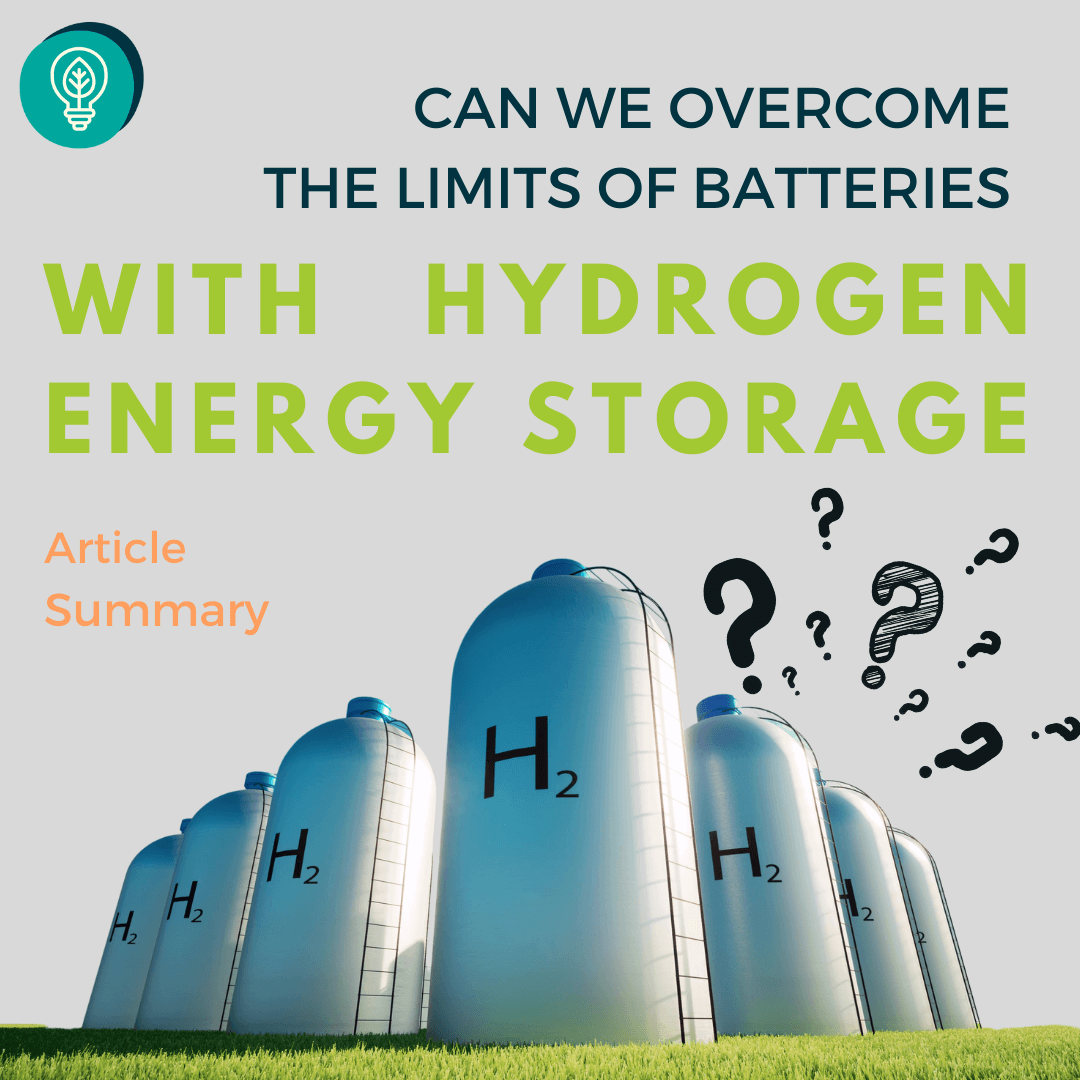
In this article, we will delve into the exciting world of hydrogen as a potential solution for energy storage, aiming to overcome

Learn about the positive and negative outcomes of the liberalisation process, and how energy communities could play a major role in the
Speeding up history in the face of war: How the invasion of Ukraine has shaken up the EU’s energy transition plan
https://yeenet.eu/wp-content/uploads/2018/11/logo-yee-728x1030.png 0 0 YEE https://yeenet.eu/wp-content/uploads/2018/11/logo-yee-728x1030.png YEE2024-01-23 12:24:532024-01-31 13:51:02Speeding up history in the face of war: How the invasion of Ukraine has shaken up the EU's energy transition planOur mission
 YEE aims to unite environmental youth non-profit organisations in Europe in order to enhance international cooperation, increase knowledge about the climate crisis, raise awareness of environmental problems and to strengthen participation of youth in environmental decision-making.
YEE aims to unite environmental youth non-profit organisations in Europe in order to enhance international cooperation, increase knowledge about the climate crisis, raise awareness of environmental problems and to strengthen participation of youth in environmental decision-making.
Get in touch
Vinohradská 2165/48
120 00 Praha 2 – Vinohrady
Czech Republic
E-mail: yee@yeenet.eu


Financially supported by the European Youth Foundation of the Council of Europe. The views expressed do not necessarily reflect the official position of the Council of Europe




